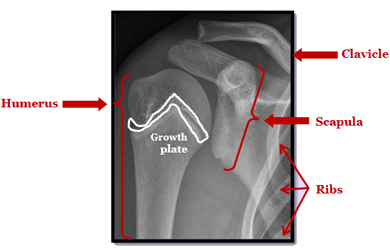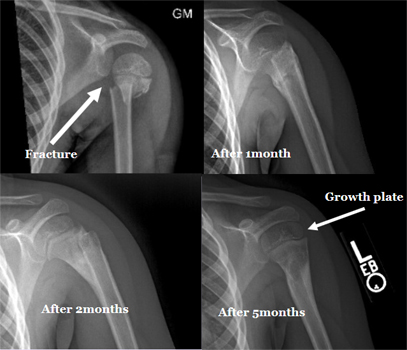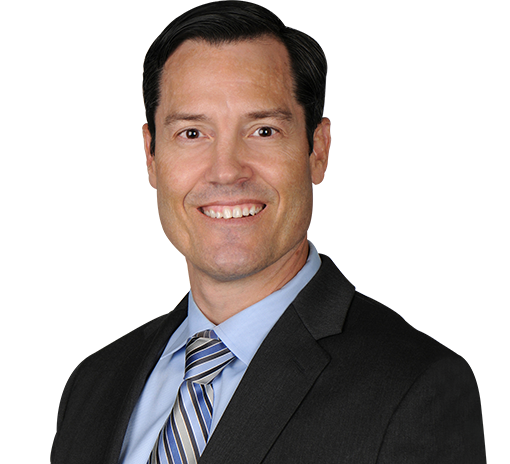Pediatric Proximal Humerus Fractures
Fractures of the upper part of the arm bone in young children have excellent potential to heal without surgery as the bone is still growing in this part of the arm.
The Growth Plate
As a child grows in size, their long bones like the arm bone, or humerus, elongate from a physis, or growth plate, near the end of the bone. This growth plate is a point of origin where more bone is added to increase the length of the bone shaft.
Because these growth plates are very active in young, fast-growing children, the ends of the long bone have enormous potential to remodel, or change shape, in young children up to 10-13 years of age. The growth plate begins to close in teenage years (ages 13-15 in girls and 15-17 in boys).
The proximal humerus physis, the growth plate at the top of the arm of bone, appears like a small gap just under the rounded head of the humerus. 80% of the growth in the humerus originates from the proximal physis

Proximal humerus
Because the upper part of the arm bone is constantly growing and changing shape (remodeling), children can heal quickly if they sustain fractures to this part of the bone and conservative, non-operative treatment is recommended.
If bone fragments are displaced in the fracture, it may be necessary to reduce. Younger patients, in general, have greater tolerance of displacement. Reducing the fracture may be considered for older patients with severe displacement.
Example Case
Below are a series of X-Rays for a 100% displaced proximal humerus fracture in a 6-yr old. This fracture was treated non-operatively, and the patient kept her arm in a sling for comfort purposes for a little over 1month after the fracture occurred.








